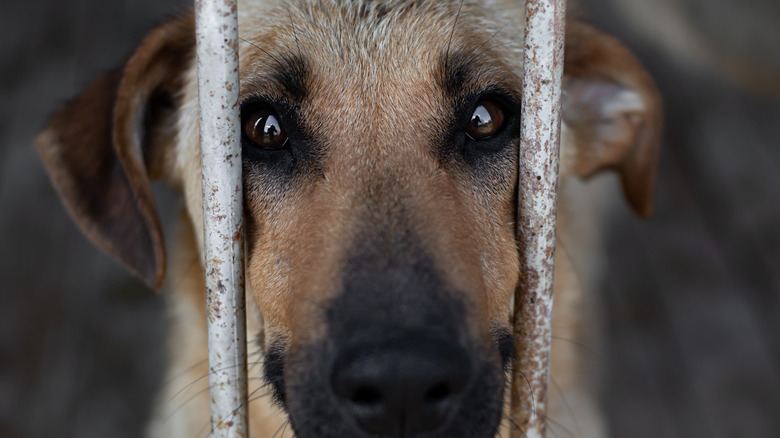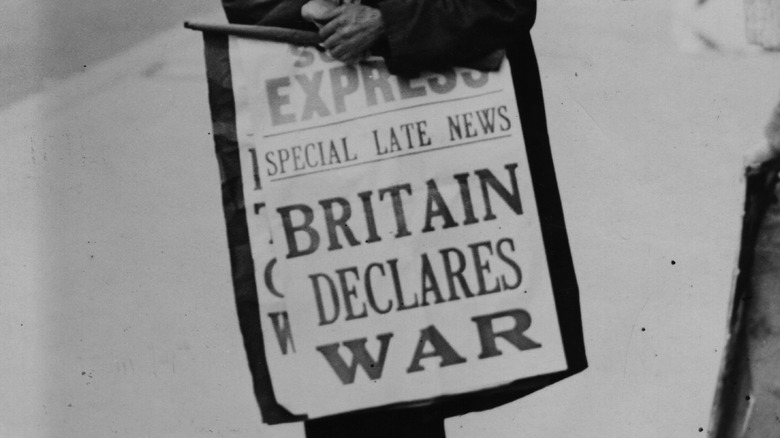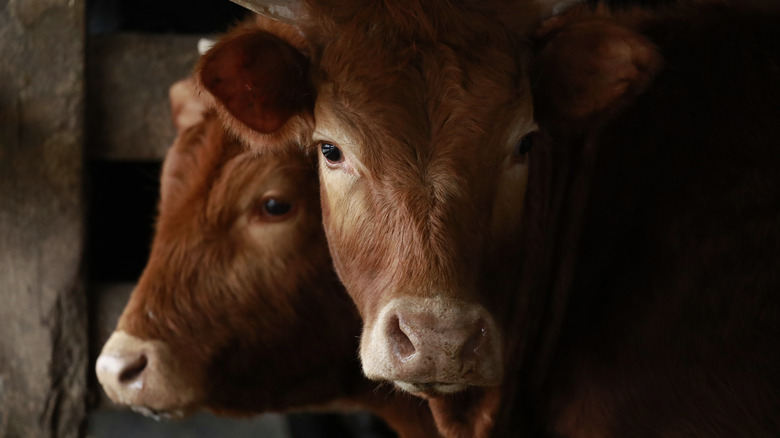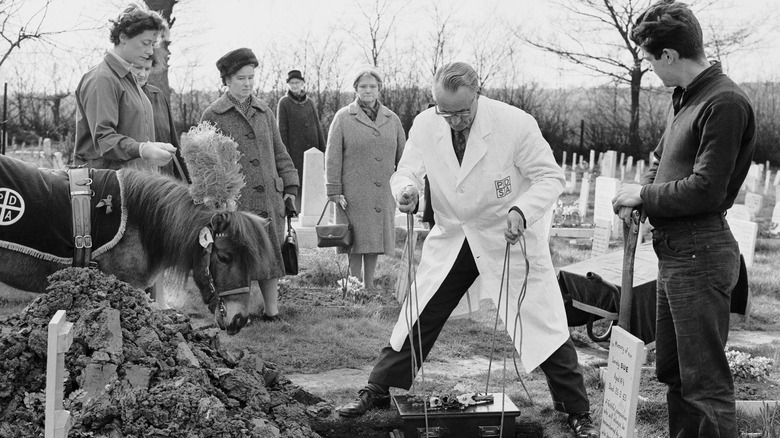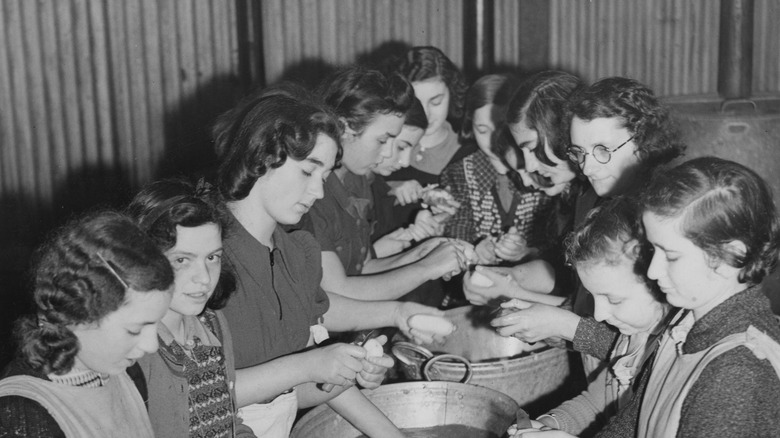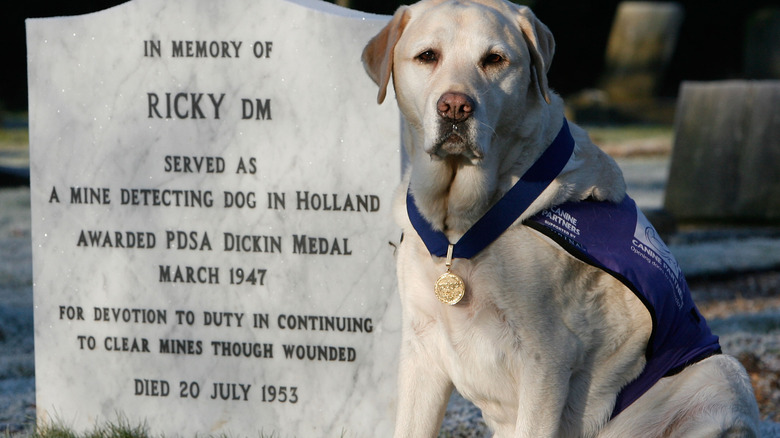The Disturbing Truth Behind The British Pet Massacre Of 1939
The COVID-19 pandemic has been tough on the world's collective mental health. Forced into isolation with a complete upheaval of life as they knew it, people began coping in any way they knew how. Young people began to quit their jobs in such a large number the phenomenon was coined "The Great Resignation" (per USA Today). Others moved to a new city (per Harvard University's Joint Center for Housing Studies) for some change of scenery or (per The Guardian) bought their first home.
Luckily for many animals in the shelter, hundreds of thousands of people also became new pet owners during the pandemic, establishing a new bond with their dog or cat. Adoptions reached new heights, with close to 9 million dogs and 5 million cats finding new homes in the two years of the pandemic, according to NPR.
According to the University of Southern Mississippi, some historians have drawn parallels between the COVID-19 pandemic and World War II. But unfortunately, many pets in the Second World War had a very different fate than some in the pandemic.
Britain declares war
Two days after Germany invaded Poland, Great Britain declared war on Germany, on September 3, 1939. According to The Wall Street Journal, the following week was a busy time in the country as the masses prepared for war, planting vegetables and storing food. That summer, the National Air Raid Precautions Animals Committee (NARPAC) was formed to advise citizens on how best to protect their pets in the case of enemy bombings or other hazards, per BBC News.
The NARPAC also distributed a pamphlet to British households, in which it provided advice on how best to prepare their furry friends for the war. The first thing to be done, according to the pamphlet, was to take any pets to the countryside (via BBC News). However, the pamphlet also said: "If you cannot place them in the care of neighbours, it really is kindest to have them destroyed." And on the left side of the page was a full-page advertisement for a bolt gun, with a caption indicating it was the "standard instrument" for the "humane destruction of domestic animals."
Pet owners react
Clare Campbell, who wrote a book about the advice from the NARPAC and its ensuing consequences, had relatives alive in Britain during World War II. She told BBC News that her uncle heard on the radio that there may be a food shortage and that the burden of feeding the family pet would be too great for the household to carry. In fact, at the time there were an estimated 6 million to 7 million household with pets like cats and dogs, as well as more than 37 million farm animals — which was altogether twice as large as Britain's population at the time (via NARPAC). As a result, Campbell's family's pet, "Paddy," along with thousands of others, was euthanized (via BBC News).
Although this was long before People for the Ethical Treatment of Animals (PETA) was established, animal rights activists and pet owners alike were critical of the advice distributed by the NARPAC, according to a book about the time, Hilda Kean's "The Great Cat & Dog Massacre: The Real Story of World War II's Unknown Tragedy" (excerpted by The Atlantic).
The Great Pet Massacre
Although estimates vary as to how many pets were killed after the pamphlet was distributed, Kean says in her book that at least 400,000 were euthanized in London (per The Wall Street Journal's review of the book). According to Atlas Obscura, the lines at animal shelters for appointments wrapped around the block. The U.K's largest pet charities, the People's Dispensary for Sick Animals (PDSA) and the National Canine Defense League (NCDL), were overburdened with appointments, with veterinarians sadly tasked with killing hundreds of animals and the NCDL running out of chloroform (via Express).
Per the Los Angeles Review of Books article about Kean's book, this so-called massacre was needless because the war hadn't actually started and they weren't running out of food yet. Plus, Kean says in her book that the mass slaughter of hundreds of thousands of pets wasn't the NARPAC's intention in the first place, but people reacted to the worst-case-scenario listed in the pamphlet that was distributed.
The ones who lived
Of course, not all pet owners reacted to the fear instilled by the pamphlet, and some decided to keep their furry friends during the war. Some government agencies actually warned against killing pets after the pamphlet came out, because they didn't want too many carcasses to introduce the threat of disease (via Express). One young girl, Pauline Caton, recalls her family saving her pet cat in Dagenham, England (via BBC News). Although food was limited, she took the time in war to queue for horse meat to feed her cat.
Others intervened to try and stop the mass killing. The Duchess of Hamilton, who was allegedly an old-school cat lady, established an animal sanctuary, where she rescued hundreds of pets from being euthanized during the war, according to BBC News. On the radio, a famous disc jockey could be heard telling his audience that destroying a "faithful friend" was no more than a means of "letting war creep into your home" (via Express).
An act of mercy?
According to Express, people started to question their decision to kill their animals once the war was underway, perhaps missing the companionship the pets provided. Per the Los Angeles Review of Books, those who kept their animals got closer to them throughout the war, much like many of us have developed stronger relationships with our pets during the trying times of the pandemic. When hundreds of thousands of troops returned safely home from Dunkirk in World War II a year later, many of them came back with dogs they had picked up along the way from France, per Express. There, they had relied on the companionship dogs provided them in the low points of the war.
The euthanization of these animals was seen at the time as a way to reduce the chances of a family starving and to prevent the animal from starving. As such, it was truly seen as an act of mercy for the animals, per the Los Angeles Review of Books. Still, regardless of the morality of these family's decisions, at least many paid their pets due respect if they were killed. In the Ilford Pet Cemetery and PDSA land, for example, certain headstones commemorate dogs who were lost in the so-called Great Pet Massacre (via Atlas Obscura).
